Social Media, Cognitive Reflection, and Combating Misinformation
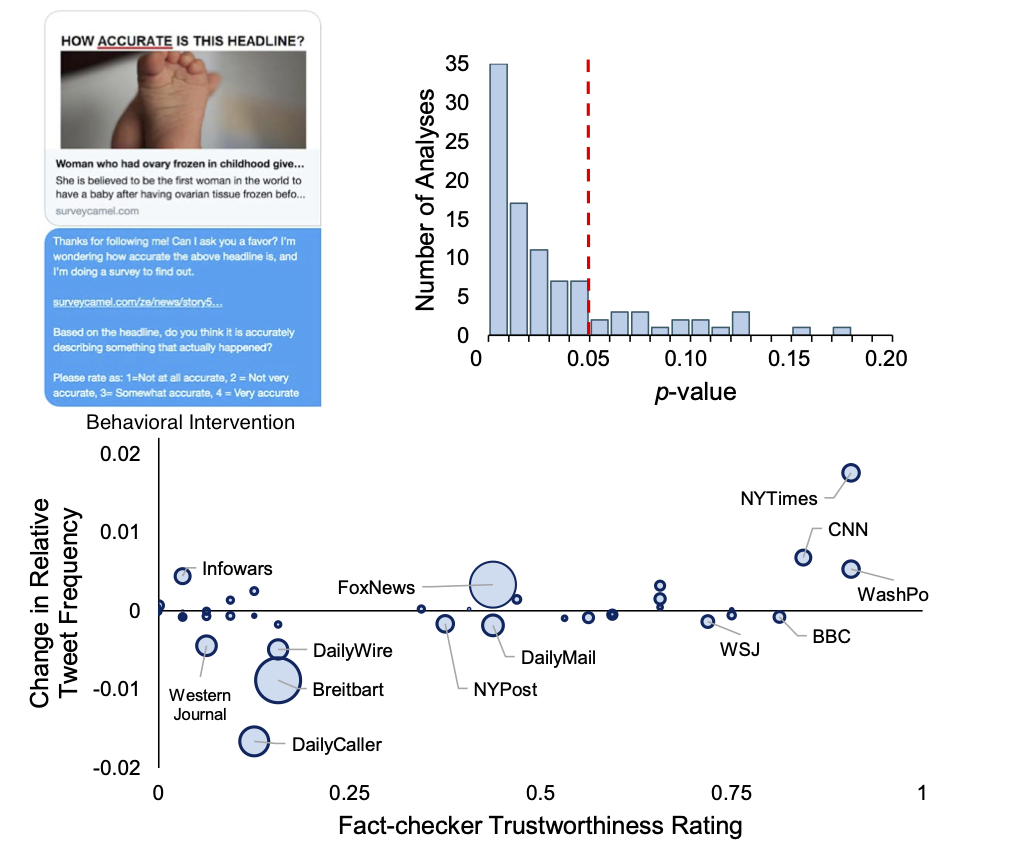
A unique feature of social media is that not only do users consume content, they also generate and distribute content. Thus, the content and structure of social media ecosystems are emergent consequences of the cognition exhibited by the individual members of that ecosystem. We devised a hybrid lab-field setup on Twitter to investigate how individual differences in cognitive style–the tendency to rely on intuitive gut responses versus engaging in careful analytic thinking– relate to behavior on the social media platform. We also designed an online experiment to prime users to use analytical thinking to improve the quality of content subsequently shared by them.
- M. Mosleh, G. Pennycook, A Arechar, and D.G. Rand “Digital Fingerprints of Cognitive Reflection’’ Nature Communications, 2021
- G. Pennycook*, Z. Epistein*, M. Mosleh*, A. Arechar, D. Eckles, and D.G. Rand “Shifting attention to accuracy can reduce misinformation online” Nature, 2021
- Media coverage: the Guardian, Research Digest, The Journalist’s Resource, Financial Times, EuroNews, Wired, the Financial, Gizmodo.
Information Bias, Collective Identity, and Collective Decisions
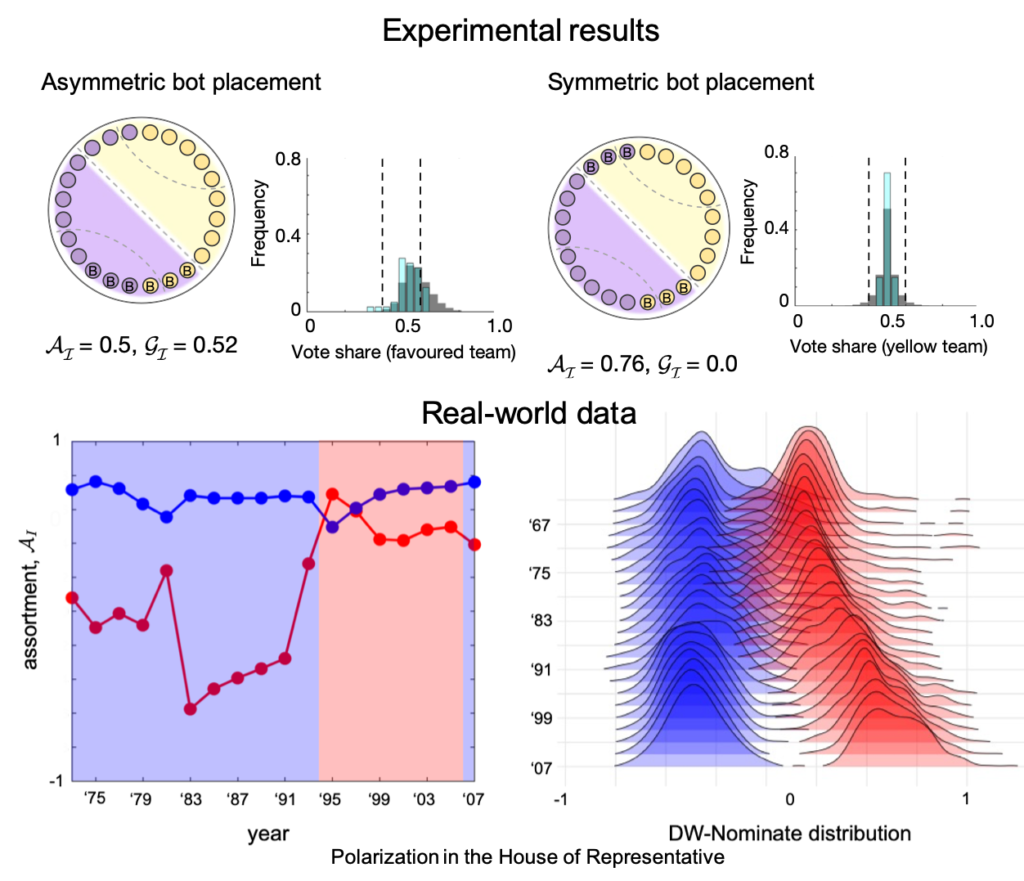
Social networks play a key role in how we access information and can subsequently affect our collective decisions. We devised an experimental setup where players are embedded within a network and can simultaneously interact with other players as well as programmed AI players while seeing the decisions of their immediate neighbors. We recruited 5000+ players from Amazon Mechanical Turk and study the outcome of the game under various network structure and bots location on the network. We used the experimental data to calibrate our mathematical model and the mathematical model to inform the experimental design in iterative process.
- M. Mosleh, C. Martel, D. Eckles, D.G. Rand “Shared Partisanship Dramatically Increases Social Tie Formation in a Twitter Field Experiment” Proceedings of the National Academy of Sciences (PNAS), 118 (7) 2021.
- Media coverage: MIT News, FoxNews,
- A. J. Stewart, M. Mosleh, M. Diakonova, A. Arechar, D. G. Rand, J. B. Plotkin’ “Information Gerrymandering and Undemocratic Decisions” Nature, Vol 573, pages 117–121 2019.
- M. Mosleh, A. J. Stewart, J. B. Plotkin, D. G. Rand “Prosociality in an Economic Game is Associated with less Parochialism and Greater Willingness to Vote for Intergroup Compromise” , Judgement and Decision Making, Vol 15, No. 1. 2020.
- Media Coverage: Washington Post, MIT news, Financial Times, the Telegraph
Dynamics of Cognition and Behavior on Networks
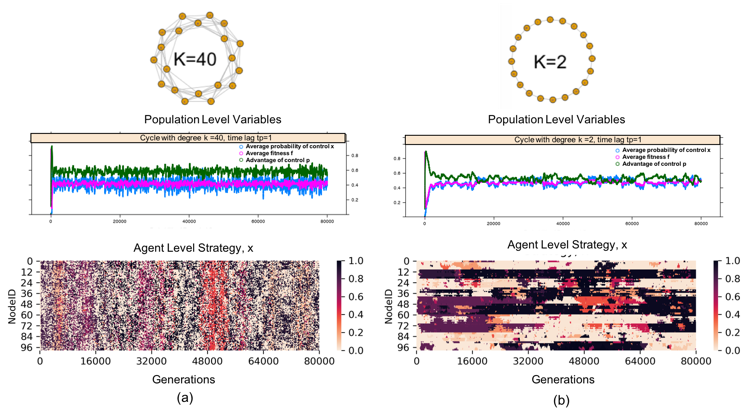
We regularly interact with and learn from others, and have the ability to impact the global environment that is shared by all. Thus, the scale of our interaction patterns (aka social network) can influence the way we act and think. We built a multi-layer simulation model of agents interacting through a network structure where agents can learn from other neighbor and can rely on different cognitive processes depending on their environment. We then study the consequences of network structure on the evolution of agents strategies under different interaction patterns.
- M. Mosleh, K. Kyler, J.D Cohen, and D.G. Rand “Globalization and Fall and Rise of Cognition”: Nature Communications. Vol 11, 3099-2020.
- M. Mosleh, D.G. Rand, “Population Structure Promotes the Evolution of Intuitive Cooperation and Inhibits Deliberation”. Scientific Reports, Vol. 8 No. 1 2018
- M. Mosleh, B. Heydari, “Fair Topologies: Community Structures and Network Hubs drive Emergence of Fairness Norms” Scientific Reports, Vol. 7 No. 1 2017.
Online Sharing Platforms

Peer-to-peer platforms, collectively known as Sharing Economy, are becoming an inventible part of our daily economic activities and, in many cases, are substituting our usage of traditionally provided services by well-established firms. Thus, the study of coevolution of sharing economy businesses and their traditional counterparts have become an important area of research. We investigate users’ opinion trends in a popular sharing economy platform for short term property rental (Airbnb) and compare it with a traditional platform for hotel reservation (TripAdvisor). We take a Natural Language Processing approach, extract opinion trends from online reviews, and compare them across different aspects of the service. We show that co-variation of opinion trends is a function of location and different aspects, which suggest a new way of market segmentation.
- M. Mosleh and B. Heydari, “Sharing Economy vs. Conventional Platforms: A Natural Language Processing Approach ” Workshops on Natural Language Processing and Computational Social Science at Annual Meeting of the Association for Computational Linguistics (ACL) 2017, Vancouver, Canada.
- M. Mosleh and B. Heydari, “Co-evolution of Consumers Preferences in Sharing Economy and Traditional Platforms: the Case of Hospitality Industry” 3rd Annual International Conference on Computational Social Science (IC2S2). 2017, Cologne, Germany.
Network Formation
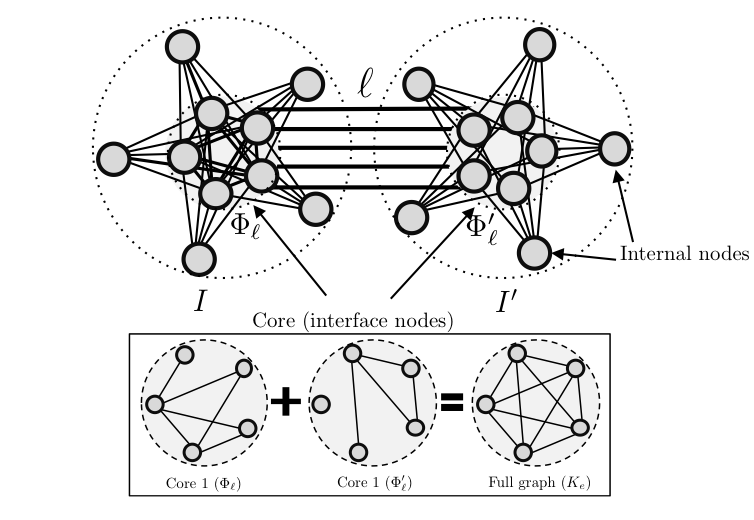
In a wide range of social and economic contexts, establishing a link between two agents can be beneficial for two agents as well as others in the network, yet the link can come with a cost. The formation of such networks can be studied under conditions of efficiency, a measure of network social welfare, and stability, which is a measure of individual incentives to form, keep or sever links. We introduced two heterogeneous cost and benefit model that covers a wide range of real-world networks and analytically found efficient structures for given cost and benefit function and investigated the stability conditions.
- M. Mosleh, P. Ludlow, B. Heydari, “Distributed Resource Management in System of Systems: An Architecture Perspective” Systems Engineering,Vol. 19 No. 4 2016 P 362-374 2016
- B. Heydari, M. Mosleh, K. Dalili, “Efficient Network Structures with Separable Heterogeneous Connection Costs” Economics Letters, vol. 134, no. September, pp. 82-85, 2015.
- B. Heydari, P. Heydari, M. Mosleh, “Efficient Integration in Multi-Community Networks”, The Journal of Mathematical Sociology Pre-print: SSRN.
Architecture Design of Socio-Technical Networked Systems

Many socio-technical systems are comprised of heterogeneous components capable of localized, autonomous decision making. Given that it is probably inefficient and not practical for every part of a system to be directly connected to every other part, the question becomes that of deciding what is the best way to connect the system components in order to enhance resource access in uncertain environments. We developed conceptual networked systems architecture framework and derived mathematical formation to quantify the system architecture value for under different environmental uncertainty.
- M. Mosleh, K. Dalili, B. Heydari, “Distributed or Monolithic? A Computational Architecture Decision Framework” IEEE Systems Journal, Vol. 12, No. 1, March 2018 P 125 – 136.
- M. Mosleh, K. Dalili, B. Heydari, “Optimal Modularity for Fractionated Spacecraft: The Case of System F6.” Procedia Computer Science, 28 (2014): 164-170.
- B. Heydari, M. Mosleh, K. Dalili, “From Modular to Distributed Open Architectures: A Unified Decision Framework” , Systems Engineering, Vol. 19 No. 3 2016 P 252-266 arXiv:1605.00682.
Data-driven Policy Analysis
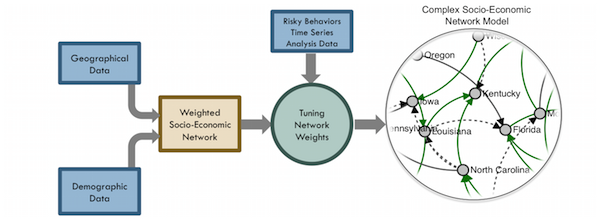
Spatial Diffusion of Behavioral riskBy considering certain types of risk as social construct that emerge through social interactions over time, we study spatial diffusion of risky behavior in various geographic regions to study how changes in risky behavior in a region affect other regions. As the first step, we study diffusion of risky driving behavior among teenage drivers in the time period between 2000-2014 in the US.
Post Obama-Care Insurance Competition One of the main goals of affordable-care act was triggering more competition among health insurance providers. We study the evolution of competition in health insurance market after introduction of ACA by studying the structural evolution of the network that connects participating insurance companies based on the similarity of their plans in similar regions. We demonstrate that this using network measures is a good predictor of evolution of competition in such markets.
- D. Gianetto, M. Mosleh, B. Heydari, “Dynamic Structure of Competition Network in Affordable Care Act Insurance Market”, IEEE Access, 2018.
- B. Heydari, M. Mosleh, “Spatial Risk Diffusion: Predicting the propagation of risk linked to human behavior” Point of View, Accenture company.